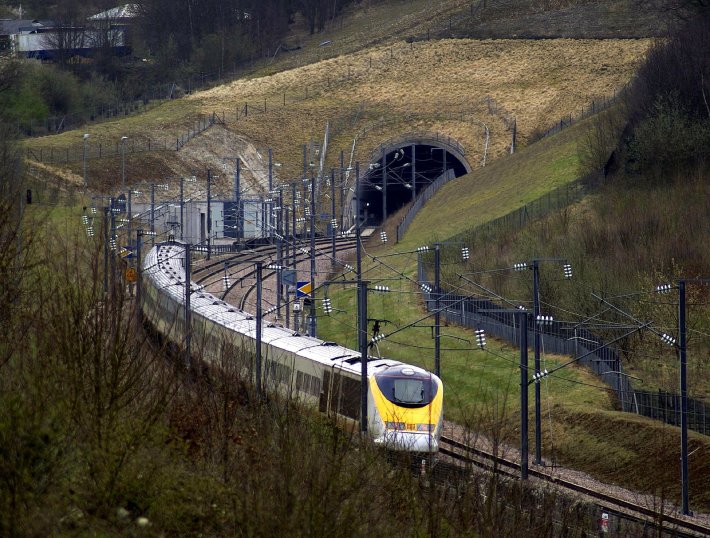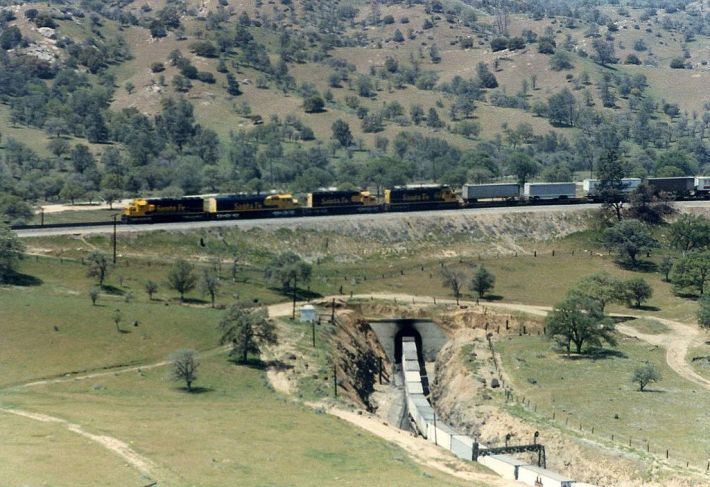
The California High-Speed Rail Authority says it will shift gears by building the first operational section of the bullet train from the Central Valley to San Jose rather than going to Burbank first, as initially planned. Trains would share the Caltrain tracks from San Jose to downtown San Francisco.
According to the Authority's official statement, “The first objective is to initiate high-speed rail passenger service as soon as possible in order to bring benefits to California and generate revenues to attract private sector participation. With existing funding and more than 100 miles of active construction in the Central Valley already underway, the Authority will complete the construction of the high-speed rail line between Silicon Valley and Central Valley by 2024, with operations beginning in 2025.”
As always happens when there is an adjustment, the change drew long-term High-Speed Rail opponents right back out, and they wasted no time lambasting the project with the same misinformation they've sowed from before 2008, when voters authorized HSR. Jim Patterson, Republican Assemblyman representing parts of Fresno and Tulare Counties, in an interview on KQED's Forum, said the change is a tacit admission that the Authority can't find the money to go south through the Tehachipies. "This is not the High Speed Rail plan that the voters approved," he said. Predictably, he called for a re-vote, since the "design that the authority is building is so different and so at odds with what the people approved."
Nonsense. Anybody can Google the project maps and see that the plan is still exactly what the voters approved. And they approved it because they realized as the state grows and pollution and environmental problems get worse, it's idiotic to just keep widening roads, since we know that doesn't work. A fast train between the northern and southern parts of the state is the solution, as anyone who travels overseas already knows.
Yes, the costs have varied. There's simply no way to build a 400-mile system across the diverse terrain of California without adjusting to the discovered realities on the ground; not to mention the ever changing politics and finances, which changes the construction timeline and with it, the costs. It is not credible that the voters of California didn't grasp that when they approved the project--especially since the Proposition stated that the legislature would have to look at the finances and give final approval. That happened in 2012, after a vigorous debate in legislative committee and on the floor of the Assembly and State Senate.
There are other bits of misinformation that opponents throw out, ad nauseam. For example, despite what the critics say, there's a very good reason to route HSR to the Bay Area from Los Angeles via the Central Valley and Palmdale, rather than straight up the Grapevine and the I-5 alignment--there's a second project, called Express West that will connect the system at Palmdale to Las Vegas. Obviously, a 15 minute addition to the travel time from LA to SF is worth it if it also connects the entire system to Las Vegas. Even someone who thinks Bakerfield, Fresno and the other cities of the Central Valley aren't worth a diversion, can't seriously support an alignment that orphans the Las Vegas train. In other words, the alignment is both what the voters approved and a sound route.
Now, bridging the Tehachapis is indeed challenging--the hardest part of the whole project. But spurious reporting from the LA Times has Californians believing it's insurmountable. That's absurd; if laborers could build tracks through the Tehachipies in 1876, obviously it can be done again, and to HSR specifications. Considering the challenges of building HSR tunnels through the Hakkōda volcanic mountains in Japan, the Sierra de Guadarrama's in Spain, other mountain ranges in Japan and China, not to mention the English Channel, pretending the Tehachapis are an unprecedented obstacle to an HSR project is just silly.

But the same interests that fought HSR in Florida, Texas, the Midwest and past projects in California, are never going to stop sowing misinformation to reporters and politicians. It wouldn't matter if HSR was proposed from LA to San Diego again, or along I-5, or anywhere else--there's a well-monied, well-oiled machine out there that will fight any project that reduces our dependence on cars and petroleum. It's no coincidence that we're seeing yet another potential ballot initiative—one of their favorite anti-rail weapons—to kill HSR by diverting the funds to water projects.
Water infrastructure has to come from HSR money? If we're going to divert money from transportation to water, okay--stop widening roads right now. Speaking of which, why aren't the same "fiscally conservative" HSR opponents complaining about widening, a true fiscal travesty? Lets also remember that the bond set up funding for a host of connecting rail projects, including upgrades to Muni and Caltrain. The proposal, if it ends up on the November Ballot and passes, will take down vital transit projects all over the state.
That said, even Bay Area residents should be disappointed that the CaHSR Authority is forced to turn away from bridging the gap through the Tehachapis in the next phase of the project. Anyone who takes Amtrak from LA to the Bay Area understands why--right now, there's a bus bridge from LA to Bakersfield because it's not practical for Amtrak to use the old rail route through the mountains, which is slow, circuitous and saturated with freight trains. If the CaHSR Authority bridged the Tehachapis first, it would be possible to run a bullet train from LA to Bakersfield and up through a significant portion of the Central Valley at over 200 mph. Then the train could continue to Oakland on Amtrak's existing "San Joaquin" tracks, towed by a diesel locomotive, as in this demonstration run from the 1990s. It's not a very elegant solution, but it would give Californians a one-seat ride from LA to the Bay Area sooner. And prioritizing getting rid of the bus bridge from LA to Bakersfield was favored by most rail advocates. Still, it's disingenuous for the politicians who have done everything possible to prevent that to now criticize the Authority for changing priorities.
All of that aside, modernizing the rail system from San Jose through the Central Valley first will have tremendous value in its own right. The fast connections will open new housing opportunities and reduce pollution from cars. The section has to be built anyway if there's ever going to be a bullet train all the way from LA to San Francisco, so why not do it now?
There was a time when building transportation was something both parties agreed on and High-Speed Rail was once (and sometimes still is) supported by many prominent Republicans, including former Governor Arnold Schwarzenegger, who remains one of its biggest boosters. It's time for our leaders, even those who don't like HSR, to act like grownups and stop re-fighting a battle that was settled in 2008. So if Patterson and some of the other anti-rail lawmakers really don't think it's a good idea to go to the Bay Area first, they should stop their complaining and their parochial obstructionism, do their jobs as state lawmakers, and work to find a way to get the project over the mountains.




